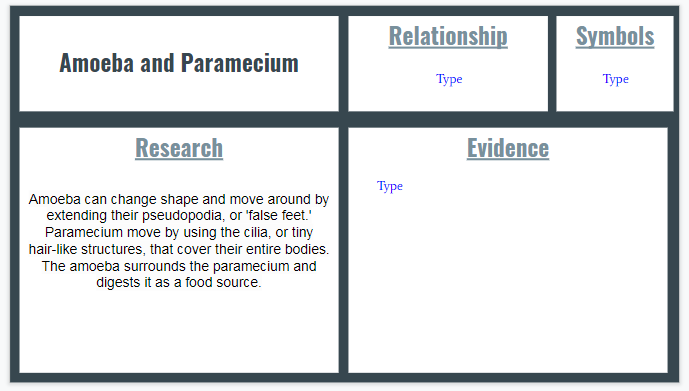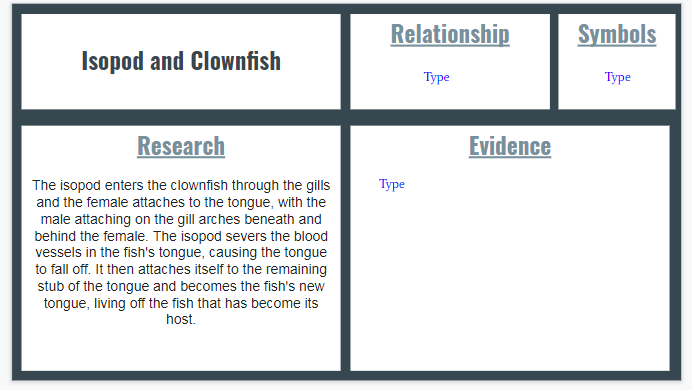Read the research on each pair of organisms for information on how they interact with each other. Based on your reading, state the type of relationship they have, the symbols for that type of relationship, and the evidence you used to explain and support your decision.
Read the research on each pair of organisms for information on how they interact with each other. Based on your reading, state the type of relationship they have, the symbols for that type of relationship, and the evidence you used to explain and support your decision.
Chapter2: Aquatic Plants And Animals
Section: Chapter Questions
Problem 5KA
Related questions
Concept explainers
Question
Read the research on each pair of organisms for information on how they interact with each other. Based on your reading, state the type of relationship they have, the symbols for that type of relationship, and the evidence you used to explain and support your decision.

Transcribed Image Text:Relationship
Symbols
Amoeba and Paramecium
Туре
Туре
Research
Evidence
Туре
Amoeba can change shape and move around by
extending their pseudopodia, or 'false feet.'
Paramecium move by using the cilia, or tiny
hair-like structures, that cover their entire bodies.
The amoeba surrounds the paramecium and
digests it as a food source.

Transcribed Image Text:Relationship
Symbols
Isopod and Clownfish
Туре
Туре
Research
Evidence
Туре
The isopod enters the clownfish through the gills
and the female attaches to the tongue, with the
male attaching on the gill arches beneath and
behind the female. The isopod severs the blood
vessels in the fish's tongue, causing the tongue
to fall off. It then attaches itself to the remaining
stub of the tongue and becomes the fish's new
tongue, living off the fish that has become its
host.
Expert Solution
This question has been solved!
Explore an expertly crafted, step-by-step solution for a thorough understanding of key concepts.
This is a popular solution!
Trending now
This is a popular solution!
Step by step
Solved in 2 steps

Knowledge Booster
Learn more about
Need a deep-dive on the concept behind this application? Look no further. Learn more about this topic, biology and related others by exploring similar questions and additional content below.Recommended textbooks for you

